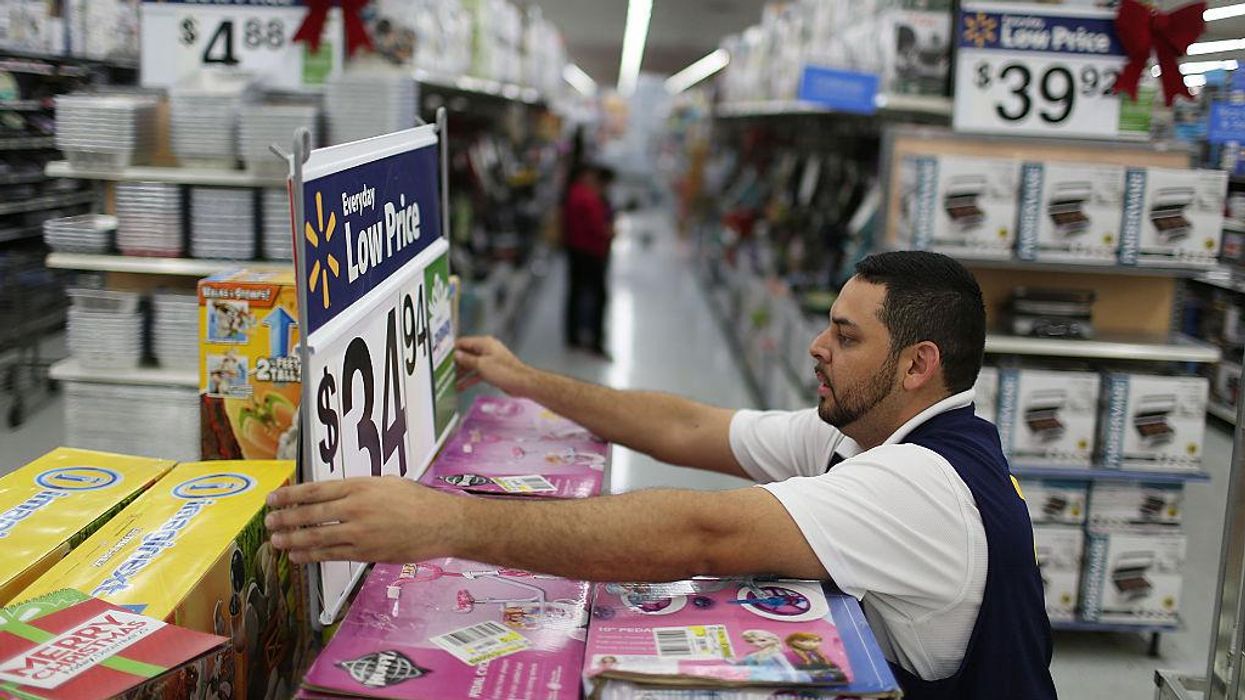
Joe Raedle/Getty Images

Are your grocery bills more expensive?
The U.S. Bureau of Labor Statistics released the consumer price index for March, which surged 0.6% from February. The CPI jumped 2.6% compared to the same period from a year ago, which is the largest monthly gain since August 2012. Last February saw a 1.7% increase.
Fueling the rising costs is the mounting cost of gasoline. Gas prices spiked 9.1% in March, which accounted for nearly half of the seasonally adjusted increase in the all items index. The natural gas index rose to 5% in March. Overall, energy prices have increased 13.2% in the last 12 months, including gas rising sharply at 22%.
Food prices edged up 0.1% last month, and are up 3.5% since last year. The cost of food consumed at and away from home also rose 0.1%.
NBC News highlighted some food items that have increased since the COVID-19 pandemic.
"Before the pandemic began, the national average for a pound of bacon in January 2020 was $4.72. By last month, the price had soared to $5.11, according to exclusive supermarket point of sale data from NielsenIQ," the report stated. "Ground beef is up to $5.26 a pound, from $5.02. Bread is up to $2.66 a loaf, from $2.44."
"Supply chains are largely inefficient at this time," Isaac Olvera, agricultural economist for ArrowStream, a supply chain management software company, told NBC News. "We're still dealing with fallout from the pandemic."
World food prices rose for the 10th-consecutive month in March, rising to their highest level since June of 2014.
"The Food and Agriculture Organization's food price index, which measures monthly changes for a basket of cereals, oilseeds, dairy products, meat and sugar, averaged 118.5 points last month versus a slightly revised 116.1 in February," Reuters reported.
The index for all items other than food and energy rose 0.3%. Used cars and trucks were up 0.5% in March, and jumped 9.5% since last year at the same time. New cars are up 1.5% since March 2020.
"The largest gain in seven months in the so-called core CPI was driven by a rise in rents as well as hotel and motel accommodation prices, which rebounded 4.4% after falling 2.7% in February," Reuters reported.
Car and truck rental prices rose 11.7% from the prior month, and the year-over-year increase was the largest on record.
Inflation-adjusted hourly earnings increased 1.5% in March from last year, the smallest gain in more than a year, according to Bloomberg.
While there are concerns about inflation, Federal Reserve policymakers estimate that the increase will be temporary.
"The annual inflation figure surged to 2.6%, a figure that was distorted by a pandemic-related decline in prices in March 2020," Bloomberg reported. "That effect will begin to fade within several months, helping explain why Federal Reserve policymakers see current price pressures as temporary rather than something more dangerous to the economy."
"April likely also will show a sharp rise, but then the numbers are supposed to decrease as the worst months of the shutdown fall out of the data comparisons," according to CNBC.
Federal Reserve Chairman Jerome Powell recently told "60 Minutes" that "it's highly unlikely" that there would be any interest rate hikes this year.
"So what we've said is that we'd consider raising rates when the labor market recovery is essentially complete and we're back to maximum employment and inflation is back to our 2% goal and is on track to move above 2% for some time," Powell said on Sunday. "It'll be a while until we get to that place. But that's the guidance that we've offered to the public of the conditions we'd want to see before we start raising interest rates."
"We can afford to wait to see actual inflation appear before we raise interest rates," he added. "Now, we don't want inflation to go up materially above 2% and go back to, you know, the bad, old inflation days that we had when you and I were in college back a long time ago. But at the same time, we do have the ability to wait to see real inflation. And that's what we plan on doing."
"When we get to that place and inflation is expected to run moderately above 2% for some time, then we'll look at raising interest rates," Powell said. "And that day will come."